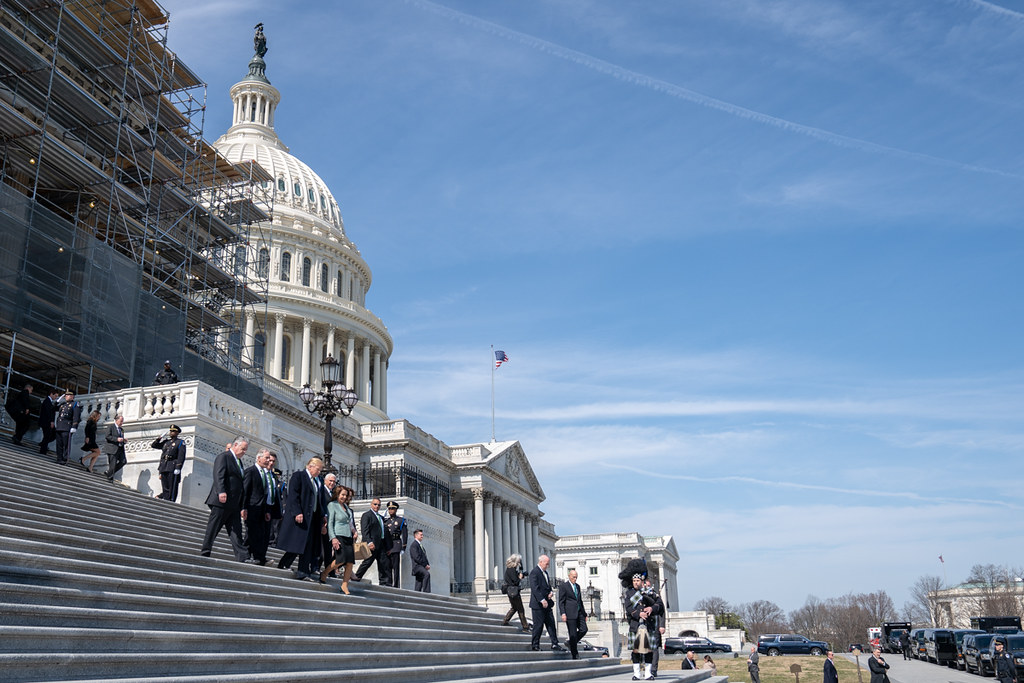The House Streamlines Subpoena Enforcement
The House of Representatives adopted a resolution on June 11 authorizing Rep. Jerrold Nadler, chair of the House Committee on the Judiciary, to go to court to pursue civil enforcement of subpoenas issued to Attorney General William Barr and former White House Counsel Don McGahn. Importantly, however, the measure also makes changes that will increase the power of House committees to pursue enforcement of additional subpoenas.

Published by The Lawfare Institute
in Cooperation With

The House of Representatives adopted a resolution on June 11 authorizing Rep. Jerrold Nadler, chair of the House Committee on the Judiciary, to go to court to pursue civil enforcement of subpoenas issued to Attorney General William Barr and former White House Counsel Don McGahn. Importantly, however, the measure also makes changes that will increase the power of House committees to pursue enforcement of additional subpoenas.
At present, House Democrats have chosen not to open a formal impeachment inquiry against President Trump. But other efforts to investigate potential misconduct by the executive branch and to check the president’s use of executive authority are proceeding on several fronts. In a number of cases—such as the attempts to obtain Trump’s personal financial records and to limit the administration’s ability to spend money on a border wall—this work has involved going to court. The resolution regarding subpoena power sets up the potential for another round of lawsuits.
The powers with which congressional committees are vested to develop legislation and conduct oversight are granted to them by their parent chambers, the House and the Senate. Questions about how much power House committees should have to issue and enforce subpoenas aren’t new. Prior to 1975, only a few House committees had the power to issue subpoenas as a matter of course under the Rules of the House of Representatives, while other panels were routinely granted the authority as part of separate investigative resolutions reported out of the House Committee on Rules and adopted by the House. But in 1973-1974, as part of a broader reform effort, the House considered whether to change this approach. Some members, including Rep. Richard Bolling, who was leading the House Select Committee on Committees, maintained that the House had become too permissive in granting committees subpoena power. “What has happened in the present situation,” he argued in a 1974 hearing, “is that it becomes a matter of rivalry and prestige. If one committee has got it, the other committee wants it, too.”
Bolling’s panel suggested tightening these procedures; under its proposal, committees and subcommittees could request subpoena power for specific purposes and could issue subpoenas “only upon the authorization of the House … expressly for (and limited to) that investigation or activity or series of investigations or activities.” (Three of the four committees that already had subpoena power would maintain it.) Once granted subpoena authority, a majority of the members on the committee would have to approve their issuance, and “compliance with any subpena [sic] issued by a committee or subcommittee … may be enforced only as authorized or directed by the House.”
Ultimately, however, the House adopted a different reform, recommended by the Democratic Caucus’s Committee on Organization, Study, and Review. This reform granted all committees and subcommittees subpoena power; however, it contained the same suggestions of Bolling’s committee on majority approval and requiring House approval for enforcement. As Margaret Taylor and one of us discussed recently on Lawfare, the House has repeatedly expanded committees’ subpoena power since then. The House has maintained, however, the requirement that enforcement of compliance with a subpoena must be authorized or directed by the full chamber. Indeed, in 2008, when the House sought to enforce a subpoena against White House Counsel Harriet Miers and White House Chief of Staff Josh Bolten through civil federal court proceedings—the first time Congress attempted to do so by adopting a single-chamber resolution to authorize the filing of its own lawsuit—the process began with a vote of the full House.
The June 11 resolution passed by the House changes this, however. Now, committee chairs have the ability to go to court on behalf of their committees to try to force compliance with subpoenas they’ve issued without first receiving approval of the full House. Instead, committee chairs will require the approval of the Bipartisan Legal Advisory Group (BLAG), which comprises the speaker, the majority leader, the majority whip, the minority leader and the minority whip. Specifically, the resolution states that a vote of the BLAG—on which Democrats have a majority—“is the equivalent of the vote of the full House of Representatives.”
Why might House Democrats be continuing this expansion of House committees’ subpoena power now? One possibility is that it is a product of the House’s litigation strategy. As Mike Stern, a former lawyer in the House General Counsel's office, has explained, the House could arguably have used the BLAG alone to authorize lawsuits to enforce committee subpoenas, without adopting this most recent resolution—but would have had to reconcile such an action with the provision in the House rules requiring the chamber to authorize or direct efforts to enforce compliance with a subpoena. The current House leadership has initiated other litigation on the House’s behalf using just the BLAG, including its challenge to Trump’s efforts to construct a border wall. But existing case law in the U.S. District Court for the District of Columbia most squarely supports the conclusion that “the House as a whole has standing to assert its investigatory power” and can authorize individual committees to do so by enforcing its subpoenas. Hence, the resolution may be an effort to avoid possible standing issues by strengthening the case that the BLAG can authorize such legal action in the House’s name. (Notably, while another D.C. district court judge recently ruled against the House on different standing grounds in the border wall case, he distinguished that matter from case law relating to the House’s investigatory and oversight authority.)
Reporting also suggests that the House would like to avoid taking up floor time with repeated votes on the House floor. Floor time can be a hot commodity in Congress, though this is often less of an issue in the House than in the Senate (where layover requirements related to filing cloture in the presence of a filibuster can eat up significant time). In addition to saving time, avoiding individual floor votes on resolutions authorizing civil enforcement of subpoenas also allows more vulnerable House Democrats to avoid being tagged as “repeatedly voting to harass the president” or whatever other criticisms might be levied against them in the 2020 campaign.
At the end of the day, civil enforcement in response to noncompliance with a House subpoena still has the potential to be a long, slow slog through the courts. The Miers litigation, for example, took roughly 19 months to resolve. But the House’s decision to make it easier for committees to pursue litigation represents another step in Democrats’ efforts to use their powers to investigate the executive branch without—yet—moving to a full impeachment inquiry.





